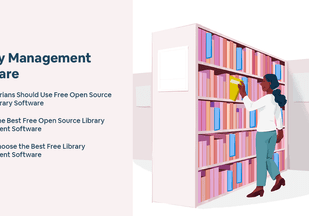Summary: Teamwork and collaboration in the workplace can bring innovation, increase productivity, and boost team satisfaction. By fostering a collaborative team culture, organizations can bring in fresh talents, improve problem-solving capabilities, enhance creativity, and achieve better outcomes. Teamwork and collaboration also promote a sense of belonging, engagement, and job satisfaction among team members. Read more about the benefits of building collaborative teams below.
Teamwork and collaboration are fundamental aspects of success in the workplace. In today’s fast-paced and complex work environments, no task can be accomplished without a strong team. Teamwork involves individuals coming together, pooling their skills, knowledge, and resources to work collaboratively towards a common goal.
By leveraging the collective expertise of team members, organizations can achieve higher levels of productivity, innovation, and problem solving. Effective teamwork promotes open communication, trust, and mutual respect among team members.
It encourages individuals to share their ideas, listen attentively to others, and work together to overcome challenges. Collaboration, on the other hand, goes beyond simply working together and involves the active engagement and participation of team members in generating ideas, making decisions, and executing tasks.
Table of Contents
What Is Meant by Team Collaboration?
Team collaboration refers to the process of individuals working together in a synchronized and coordinated manner to achieve a common goal or complete a specific task. It involves active participation, communication, and cooperation among team members, leveraging their diverse knowledge, skills, and perspectives.
In a collaborative team environment, members actively contribute their ideas, expertise, and opinions to the group. They engage in open and constructive discussions, actively listen to each other, and respect different viewpoints. Collaboration emphasizes collective effort and shared responsibility, rather than individual contributions, creating a sense of unity and ownership within the team.
Why Is Team Collaboration Important?
Team collaboration at workplace is a crucial element as it helps foster collaboration, communication, trust, and shared goals.
- Communication: Open and transparent communication is vital for successful collaboration. With the help of team collaboration, team members share information, ideas, and feedback clearly. This ensures that everyone is on the same page and working towards a common goal.
- Cooperation: Cooperation happens when team members collaborate to achieve a shared goal and support one another. This involves being receptive to others’ ideas and suggestions, providing assistance when needed, and actively seeking opportunities for harmony in the team.
- Trust: Trust is the most essential part of successful collaboration. Teamwork and collaboration boost trust among team members and each other’s abilities, competence, and intentions. Building trust requires honesty, integrity, and delivering on commitments.
- Shared Goals: Team collaboration requires a clear and shared understanding of goals and objectives. When everyone is aligned towards a common goal, it becomes easier to work together toward achieving those goals.
- Conflict Resolution: Collaboration sometimes leads to conflicts or disagreements. Therefore, effective team collaboration involves addressing and resolving conflicts constructively, focusing on finding mutually beneficial solutions.
5 Different Ways to Boost Team Collaboration
Here are five strategies to enhance collaboration in the workplace:
- Establish a collaboration strategy: Developing a collaboration strategy is crucial for gaining organizational support and demonstrating a commitment to effective collaboration. This strategy should address the specific needs of the organization, including training, tools, and hybrid work environments. Regularly review and update the strategy to ensure its effectiveness.
- Identify obstacles to collaboration: Recognize and understand the barriers that hinder collaboration within your organization. Conduct surveys or assessments to gather insights on employee attitudes, cultural challenges, and potential blockers. Share the findings with the team and devise plans to encourage collaboration based on the feedback received.
- Set clear goals for collaborative teams: Clearly define and communicate goals for collaborative projects. Having a strong sense of purpose and clear objectives significantly impacts the productivity and success of collaborative work. Explicitly define or outline desired results and deliverables to provide focus and direction to the team.
- Recognize and reward collaboration: Recognize as well as reward both individual and team efforts. This will help boost the performance of individuals as well as a team. High-performing organizations are more likely to incentivize collaboration and recognize collective achievements alongside individual performance. Review existing reward systems to ensure they encompass and appreciate collaborative contributions.
- Foster knowledge sharing: Facilitate knowledge sharing among team members to enhance collaboration. Sharing insights is a critical factor in business success and effective collaboration. You can implement document management systems and communication tools that facilitate the flow of information, making it easier for individuals to access the required knowledge. This, in turn, promotes collaboration and efficiency.
By implementing these strategies, organizations can create a collaborative culture, improve teamwork, and achieve better outcomes.
What are the Benefits of Collaboration and Teamwork?
The advantages of collaboration and teamwork in the workplace are extensive when implemented effectively. Here are some key benefits:
- Enhanced Creativity: By bringing different ideas together, collaborative team members can generate new ideas, leading to innovative solutions that may not have been discovered individually.
- Improved Team Dynamics: Collaborating on projects allows team members to develop stronger bonds, recognize and showcase their unique strengths and talents, and feel valued as contributors to the larger team. Consequently, this fosters a sense of satisfaction and leads to higher-quality work.
- Alignment In Dispersed Teams: Collaboration helps distributed team members feel less isolated and more connected to the organization. This promotes active participation in decision-making, brainstorming sessions, and equal distribution of tasks.
- Knowledge Sharing: Collaboration and teamwork facilitate a continuous exchange of information among team members. This leads to joint initiatives, collaborative problem-solving, idea-sharing, and increased visibility across the entire team.
- Streamlined Workflows: Successful collaboration optimizes and streamlines business processes and individual workflows. It enhances team productivity, allowing team members to free up time for other essential tasks.
- Employee Engagement: Collaboration significantly impacts employee engagement levels. Engaged employees demonstrate higher productivity, improved performance, and are more likely to stay committed to their organizations.
7 Common Examples of Teamwork and Collaboration in the Workplace
Below mentioned are a few examples of teamwork and collaboration in the workplace:
- Team Meetings: Regular team meetings allow members to come together, share updates, discuss progress, and address any challenges. It promotes open communication, and information sharing, and ensures everyone is aligned towards common goals.
- Task and Project Delegation: Ensures that work is distributed evenly based on skills and expertise. This approach promotes a sense of accountability and encourages each member to contribute effectively.
- Resource Allocation & Project Management: By working together, teams can effectively allocate resources, avoid duplication, and optimize efficiency. Apart from that, effective project management relies on better collaboration among team members. Coordinating tasks, setting realistic deadlines, and involving the team in decision making promote a sense of ownership and accountability, leading to successful project completion.
- Cross-functional Projects: Across different departments or teams brings together multiple skills and expertise. This allows for the seamless exchange of knowledge, increased efficiency, and the ability to tackle complex projects.
- Peer Learning and Mentoring: Collaboration in the form of peer learning and mentoring can accelerate individual and team growth. It not only enhances learning but also builds a supportive and collaborative work culture.
- Continuous Improvement: Can identify areas of improvement within their processes, workflows, or products/services. Through brainstorming, feedback sessions, and idea sharing, teams continuously evolve and strive for excellence.
- Celebrating Success: By recognizing and celebrating team achievements, whether big or small, it fosters a sense of unity and motivates team members to continue working together towards success.
How Does Cisco Webex Help in Teamwork and Collaboration?
Cisco Webex is a video conferencing platform that allows users to hold virtual meetings, training sessions, and collaborate remotely.
It offers a range of features such as screen sharing, video streaming, and audio conferencing. It helps improve teamwork and collaboration in the workplace in several ways:
- Virtual Meetings and Video Conferencing: Facilitates virtual meetings and video conferencing, allowing team members to connect and collaborate regardless of their physical location. It supports high-quality audio and video, screen sharing, document sharing, and interactive whiteboarding, enabling real-time communication and engagement.
- Team Messaging and File Sharing: Webex provides a platform for team messaging and file sharing, allowing team members to communicate, collaborate, and share files in a centralized space.
- Project Spaces: Helps create dedicated project spaces where team members can collaborate on specific projects or initiatives. These spaces provide a shared workspace for discussions, file sharing, task management, and overall project coordination, to improve teamwork and collaboration in the workplace.
- Integration with Productivity Tools: Cisco Webex seamlessly integrates with popular productivity tools such as Microsoft Office 365, Google Workspace, and others. This integration allows for a smooth workflow, enabling team members to access and collaborate on documents, spreadsheets, and presentations directly through a single Webex platform.
- Recording and Playback: Webex allows meetings, video conferences, and presentations to be recorded, making it easier for team members to refer important discussions, decisions, and presentations. This feature is especially valuable for distributed teams or team members with conflicting schedules.
- Security and Privacy: Cisco Webex prioritizes security and privacy, providing end-to-end encryption for meetings and data. It offers features like password protection, attendee authentication, and data encryption to ensure the confidentiality and integrity of team collaboration.
Overall, Cisco Webex promotes teamwork and collaboration by facilitating virtual meetings, enabling real-time communication and file sharing, providing project spaces, integrating with productivity tools, offering recording and playback capabilities, and prioritizing security and privacy.
Conclusion
Collaboration and teamwork play a crucial role in boosting employee morale, job satisfaction, and overall productivity. Cisco Webex, a reliable video conferencing platform, contributes significantly to teamwork and collaboration by offering various features.
It enables virtual meetings and video conferencing, provides high-quality audio and video, screen sharing, document sharing, and interactive white-boarding. Apart from that, team messaging and file-sharing capabilities allow for seamless communication and collaboration in a centralized space.
The creation of project spaces facilitates dedicated collaboration on specific projects, including discussions, file sharing, and task management. Integration with popular productivity tools ensures a smooth workflow by allowing direct access and collaboration on documents, spreadsheets, and presentations.
Moreover, Cisco Webex emphasizes security and privacy, providing end-to-end encryption, attendee authentication, and password protection.
Its recording and playback feature aids in referencing important discussions, while prioritizing security. Overall, Cisco Webex enhances teamwork and collaboration in the workplace by enabling real-time communication, file sharing, project coordination, and ensuring security and privacy.
FAQs
- What are the best tools for working together as a team in the workplace?
Some of the best tools for working together as a team in the workplace include Cisco Webex, Ziflow, Smartsheet, Height, Wrike, Gather Content, Evernote, Workmates, Miro, Blink, Forecast, and more.
- How to promote teamwork and collaboration?
To promote teamwork and collaboration in the workplace, foster open communication by encouraging active listening and creating an open environment. Establish clear goals and expectations and provide opportunities for team members to collaborate on projects.
Encourage team members to participate in team-building activities. Apart from that, utilize collaboration tools to facilitate communication and document sharing. Lastly, recognize and reward successful and collaborative efforts.






























